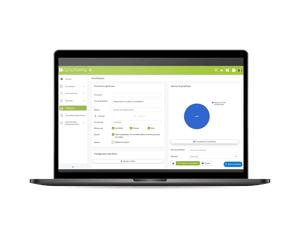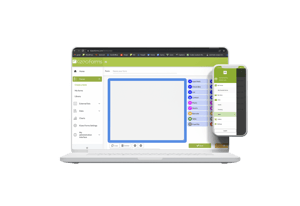Collecting and interpreting data involves a systematic approach to ensure accurate and meaningful analysis. Here is a step-by-step guide on how to collect and interpret data:
-
Define Objectives and Research Questions: Clearly establish the objectives of your data collection and the research questions you seek to answer. This provides a framework for data collection and guides subsequent analysis.
-
Determine Data Collection Methods: Select appropriate data collection methods based on your research objectives. This could include surveys, interviews, observations, experiments, or data mining from existing sources. Ensure that the chosen methods align with the type of data you need and the resources available to you.
-
Develop Data Collection Tools: Design data collection instruments, such as questionnaires or interview guides, that are aligned with your research questions. Ensure they are clear, concise, and effectively capture the required information. Pilot test the tools to identify any issues or ambiguities before full-scale data collection.
-
Implement Data Collection: Conduct the data collection process following the established protocols. Train data collectors if necessary and ensure consistency in data collection procedures. Maintain proper documentation of data sources, collection dates, and any contextual information that might impact the interpretation.
-
Organise and Cleanse Data: Once data is collected, organize it in a structured manner. Review and clean the data by removing any outliers, errors, or missing values. Data cleaning ensures the accuracy and reliability of the dataset, allowing for more robust analysis.
-
 Analyse the Data: Choose appropriate data analysis techniques based on your research objectives and the type of data collected. This could involve descriptive statistics, inferential statistics, qualitative coding, or data visualization. Use software or tools that facilitate the analysis process, ensuring accuracy and efficiency.
Analyse the Data: Choose appropriate data analysis techniques based on your research objectives and the type of data collected. This could involve descriptive statistics, inferential statistics, qualitative coding, or data visualization. Use software or tools that facilitate the analysis process, ensuring accuracy and efficiency. -
Interpret the Findings: Analyse the results of your data analysis in the context of your research objectives and research questions. Identify patterns, trends, relationships, or significant findings. Compare and contrast the results with existing theories, literature, or benchmarks. Interpret the data objectively and draw meaningful conclusions based on the evidence.
-
Communicate and Present Findings: Prepare a comprehensive report or presentation that communicates your findings clearly and effectively. Use visual aids, tables, and charts to present data in a digestible format. Include relevant context, limitations, and recommendations for future research or actions based on the data interpretation.
-
Validate and Seek Feedback: Share your findings with colleagues, experts, or stakeholders to validate your interpretations and gather feedback. Engage in discussions to gain different perspectives and ensure the robustness of your interpretations.
-
Iterative Analysis: Data collection and interpretation often involve an iterative process. As new insights emerge or additional data becomes available, revisit your analysis and interpretations to refine or expand your understanding.
By following these steps, you can collect and interpret data in a systematic and rigorous manner, enabling you to derive meaningful insights and make informed decisions based on the evidence gathered.
 Kizeo Forms stands out as the best tool for collecting and interpreting data due to its combination of customisable digital forms, real-time data capture, comprehensive data validation, and offline data collection capabilities. With its user-friendly interface and powerful features, Kizeo Forms ensures accurate and targeted data gathering while minimising errors and enhancing data reliability. The platform's intuitive data interpretation tools facilitate efficient analysis, allowing users to derive meaningful insights and make informed decisions based on the collected data. Overall, Kizeo Forms provides a seamless and reliable data collection and interpretation experience, making it the top choice for organisations seeking accurate and actionable data.Offline Data Collection: Kizeo Forms allows for data collection
Kizeo Forms stands out as the best tool for collecting and interpreting data due to its combination of customisable digital forms, real-time data capture, comprehensive data validation, and offline data collection capabilities. With its user-friendly interface and powerful features, Kizeo Forms ensures accurate and targeted data gathering while minimising errors and enhancing data reliability. The platform's intuitive data interpretation tools facilitate efficient analysis, allowing users to derive meaningful insights and make informed decisions based on the collected data. Overall, Kizeo Forms provides a seamless and reliable data collection and interpretation experience, making it the top choice for organisations seeking accurate and actionable data.Offline Data Collection: Kizeo Forms allows for data collection
